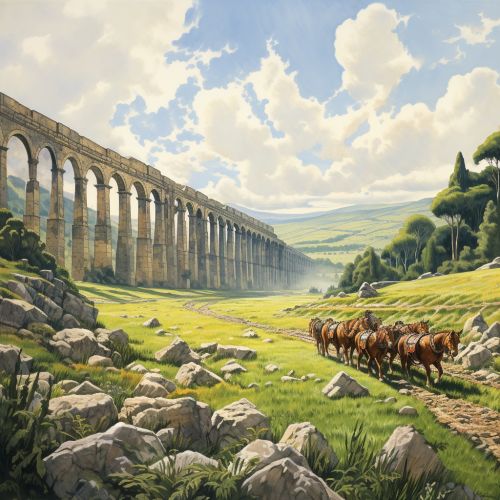Roman aqueduct
Introduction
The Roman aqueduct was an impressive feat of ancient engineering, designed to transport water from sources such as rivers and springs to urban centers. These structures played a crucial role in the development of Rome and other cities throughout the Roman Empire, providing a reliable supply of fresh water for drinking, bathing, and other uses.
Design and Construction
Roman aqueducts were typically constructed using a combination of stone, brick, and volcanic cement known as pozzolana. The design of these structures was based on a simple yet effective principle: gravity. Water was collected at a higher elevation and transported downhill through a system of channels and tunnels.


The construction of a Roman aqueduct required careful planning and precise engineering. The route of the aqueduct had to be carefully surveyed to ensure a steady, gradual decline from the source to the city. This was achieved using a tool known as a chorobates, a type of level that allowed the engineers to maintain a consistent gradient.
Types of Aqueducts
There were two main types of Roman aqueducts: above-ground and underground. Above-ground aqueducts, also known as "high bridges", were the most visually impressive, often spanning valleys and gorges on towering stone arches. Underground aqueducts, or "inverted siphons", were used to traverse low-lying areas or to cross under obstacles such as rivers.
Notable Aqueducts
There are several notable Roman aqueducts that have survived to the present day. The Aqua Claudia, completed in 52 AD, was one of the longest, stretching over 70 kilometers from its source in the Anio valley to Rome. The Pont du Gard in France, part of the Nîmes aqueduct, is another well-preserved example, notable for its three-tiered design and remarkable state of preservation.
Legacy
The legacy of Roman aqueducts extends far beyond their physical remains. They are a testament to the engineering prowess of the Romans and their understanding of hydraulics and civil engineering. Many modern water supply systems still use principles first employed in the design and construction of Roman aqueducts.
